
[293] Quercus rubra, Red Oak – More Oaks
Introduction
The genus Quercus has about five hundred species, generally called Oaks, all native to the Northern Hemisphere.
Several related genera also have species called oaks. I have split the genus into two blogs. After [292] Pedunculate Oaks and other Oaks, today I will look at the more recent introductions to the UK such as [D] Quercus rubra, the Red Oak, but especially [E] Quercus cerris, the Turkey Oak.
Taxonomy
Kingdom – Plants
Division – Vascular Plants
Class – Angiosperms (Flowering Plants)
Order – Fagales
Family – Fagaceae
Subfamily – Quercoideae
Genus – Quercus
- Subgenus – Quercus
- Section – Quercus or Lepidobalanus or Leucobalanus (White Oaks)
- About 100 species including …
- Quercus alba – White Oak (North America)
- Quercus petraea – Sessile Oak
- Quercus robur – Pedunculate Oak
- Section – Mesobalanus
- Seven species
- Section – Cerris
- About 30 species including …
- Quercus cerris – Turkey Oak
- Quercus ilex – Holm Oak
- Section – Protobalanus (Intermediate Oaks)
- Five species
- Section – Lobatae (Red Oaks)
- About 100 species including …
- Quercus rubra – Northern Red Oak
- Section – Quercus or Lepidobalanus or Leucobalanus (White Oaks)
- Subgenus – Cyclobalanopsis (Ring-supped Oaks)
- About 150 species
Names
Species in the section Lobatae are called Red Oaks to distinguish them from the White Oaks (Section Quercus) although not all have common names including ‘red.’ The main difference is their leaf shape but red oaks generally have darker coloured bark. As we have seen rubra means red.
The Turkey Oak does come from Turkey. Cerris comes from cerrus, the Classical name of the Turkey Oak. As for many scientific names the exact spelling does not match valid Latin.
You will recognize balanus from [313] the Barnacle. (Well, you will when you get there. I wrote it a few months ago.)
[D] Red Oak
All the Red Oaks come from the Americas. [They do include Quercus laevis, the American Turkey Oak, which gets its name from the resemblance of its leaves to a turkey’s foot!]
Quercus rubra, generally known as the Northern Red Oak, is native to the East of the USA. In Britain it is generally just sold as the Red Oak. It is probably the most common of several North American species of oak sold in Britain.
The bark of Quercus rubra can be reddish grey-brown with vertical ridges and shiny stripes. On older, larger trees it is a lighter grey with vertical stripes.
The lobed leaves of Quercus rubra are larger than the other species of Quercus in these blogs. They turn a spectacular red in the autumn.
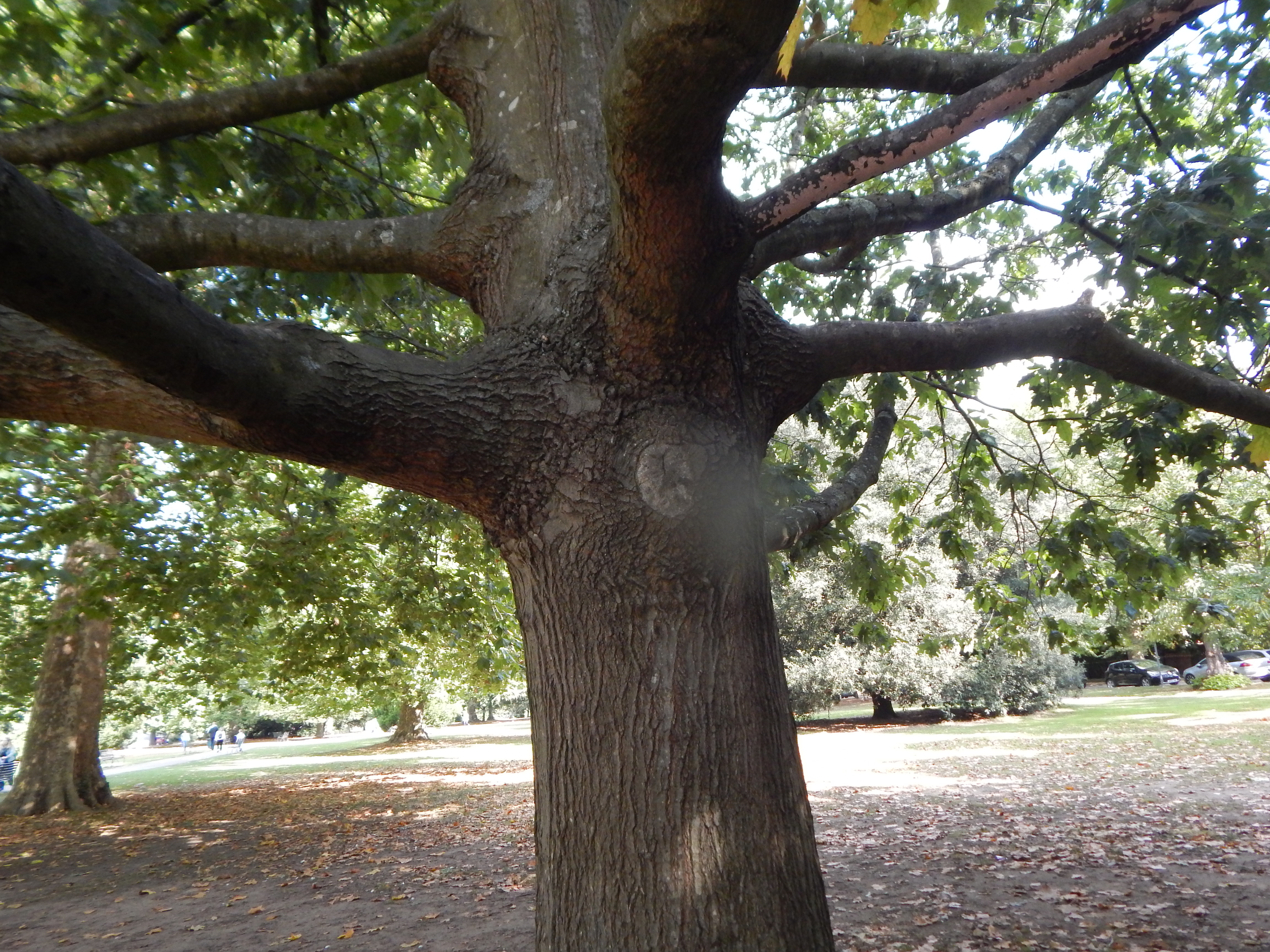

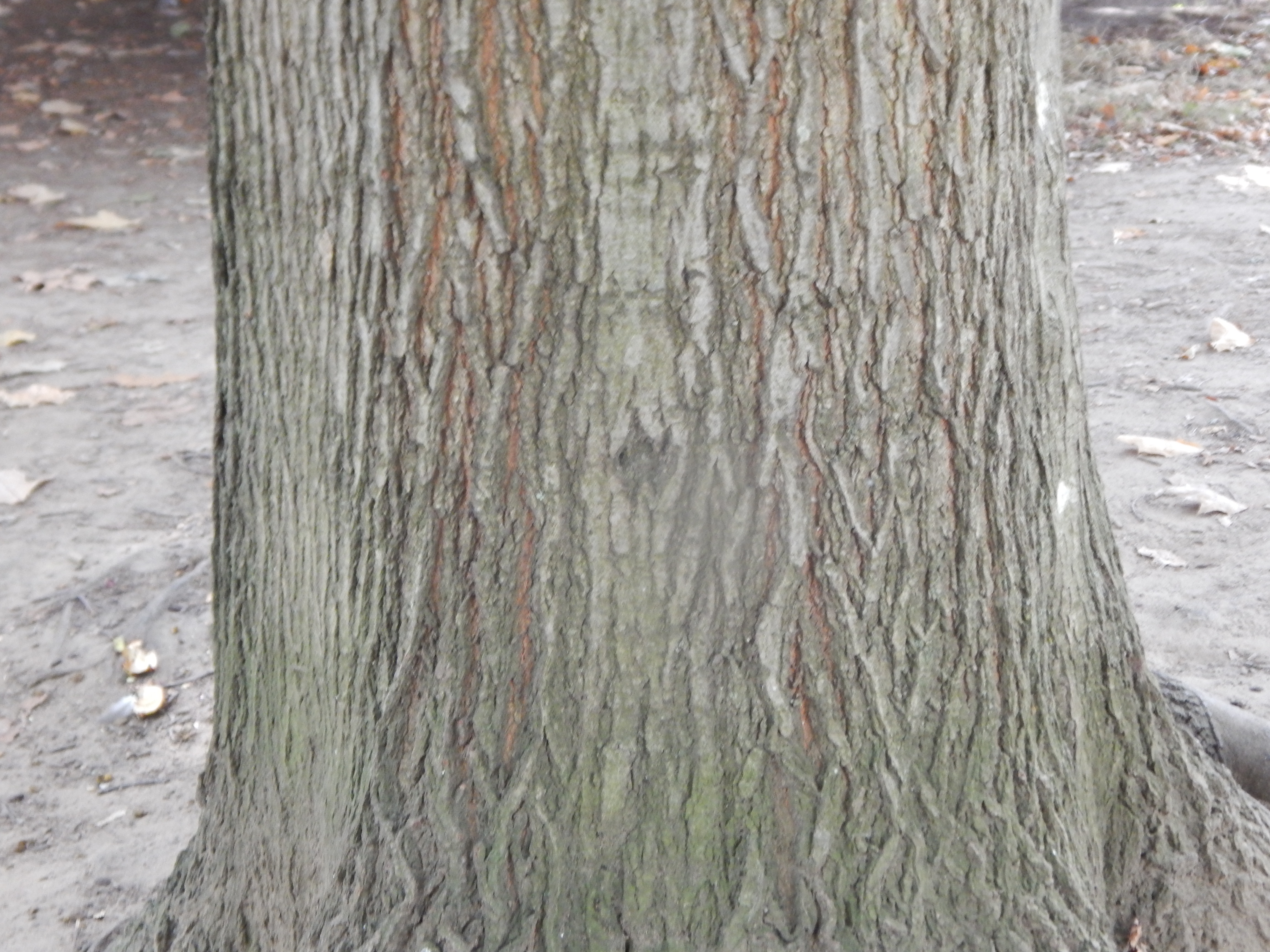

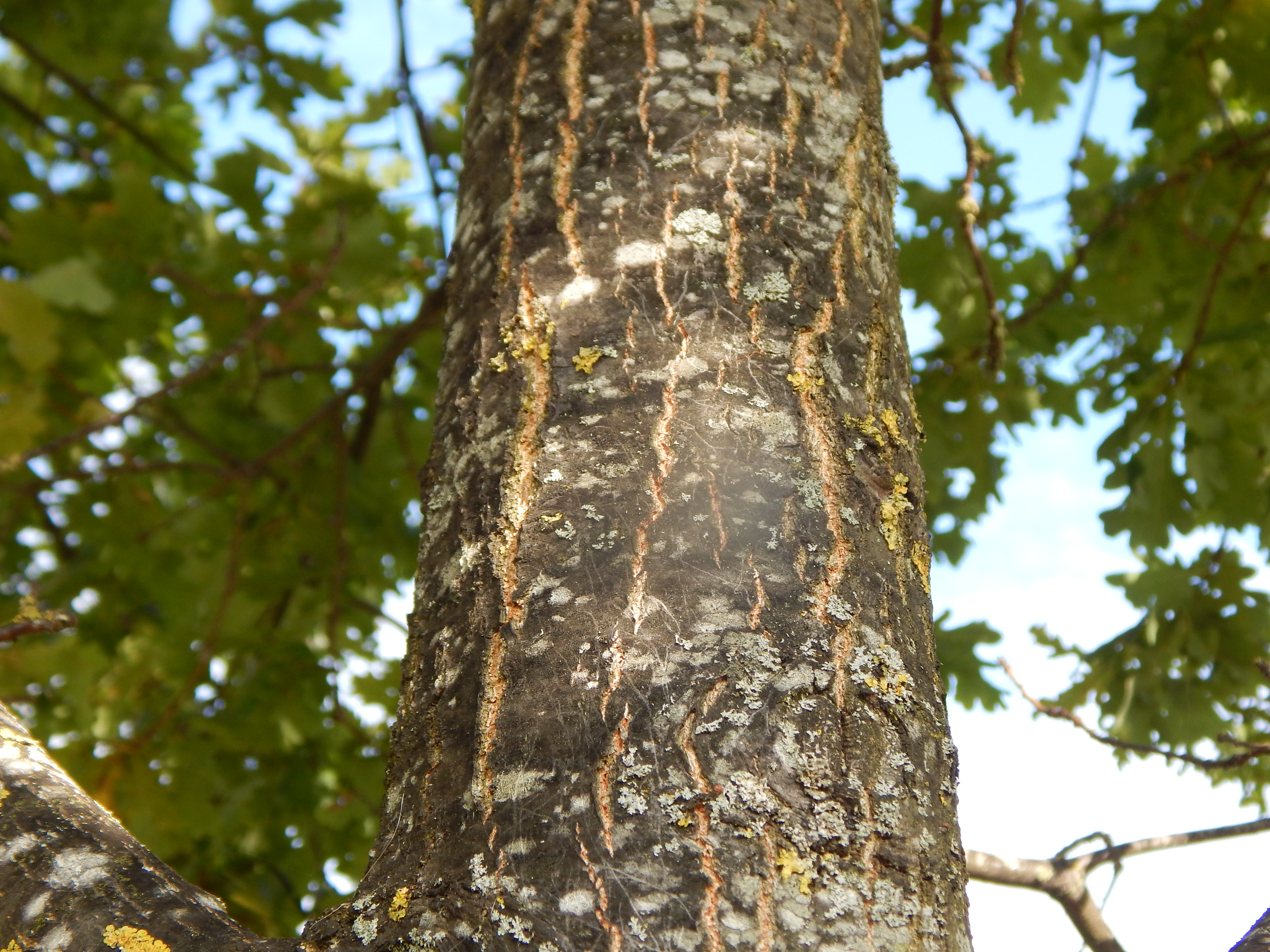
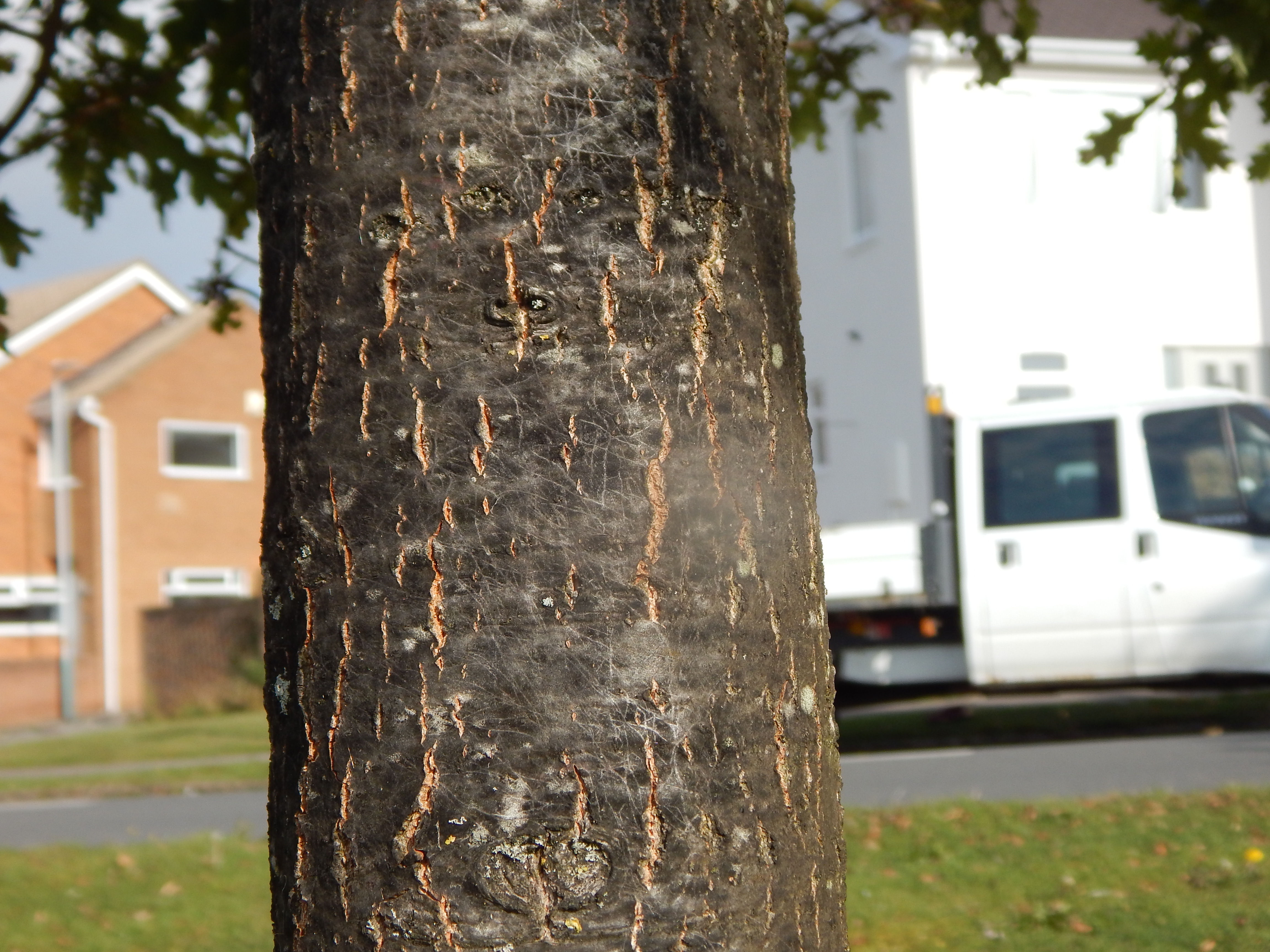
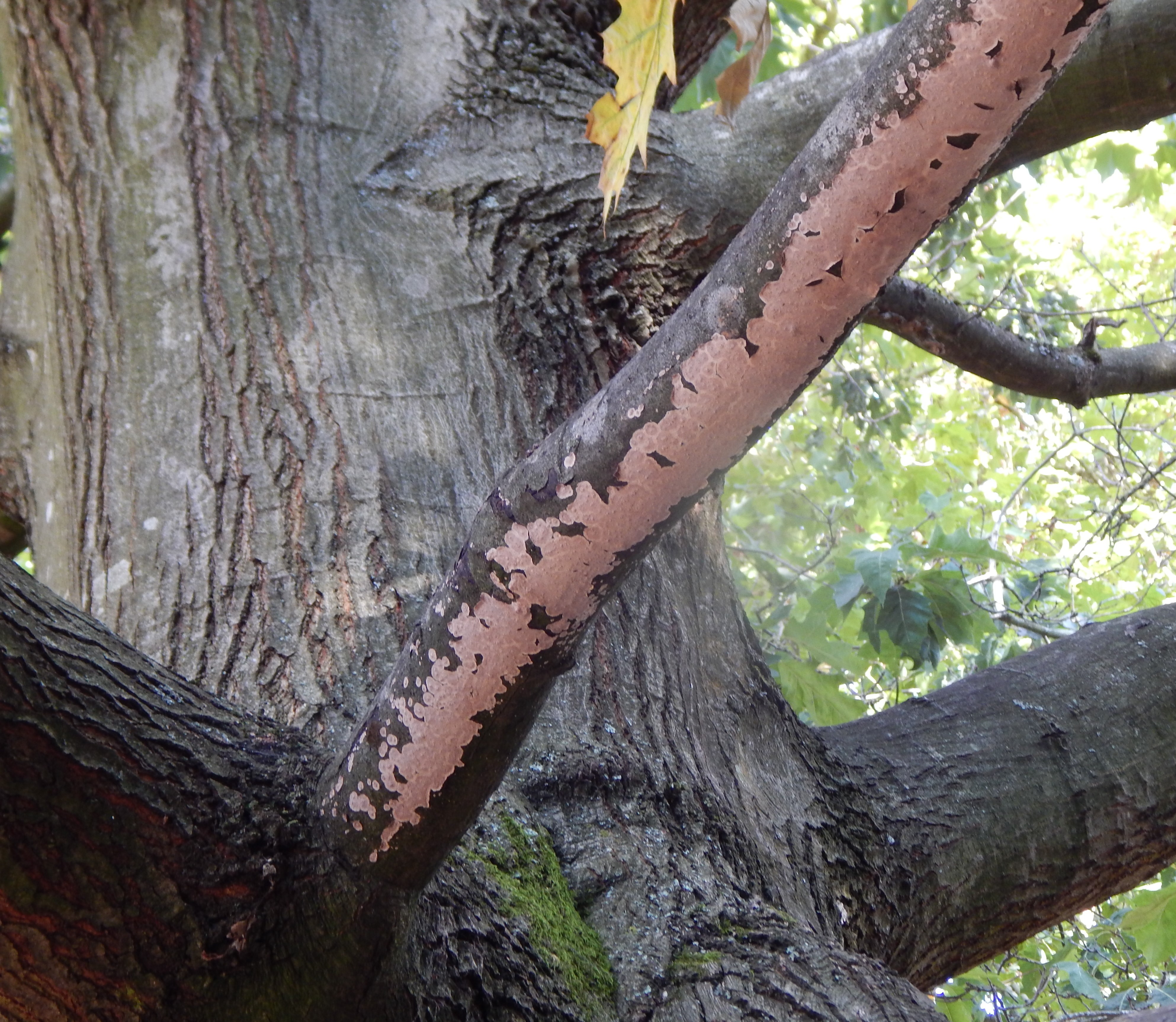
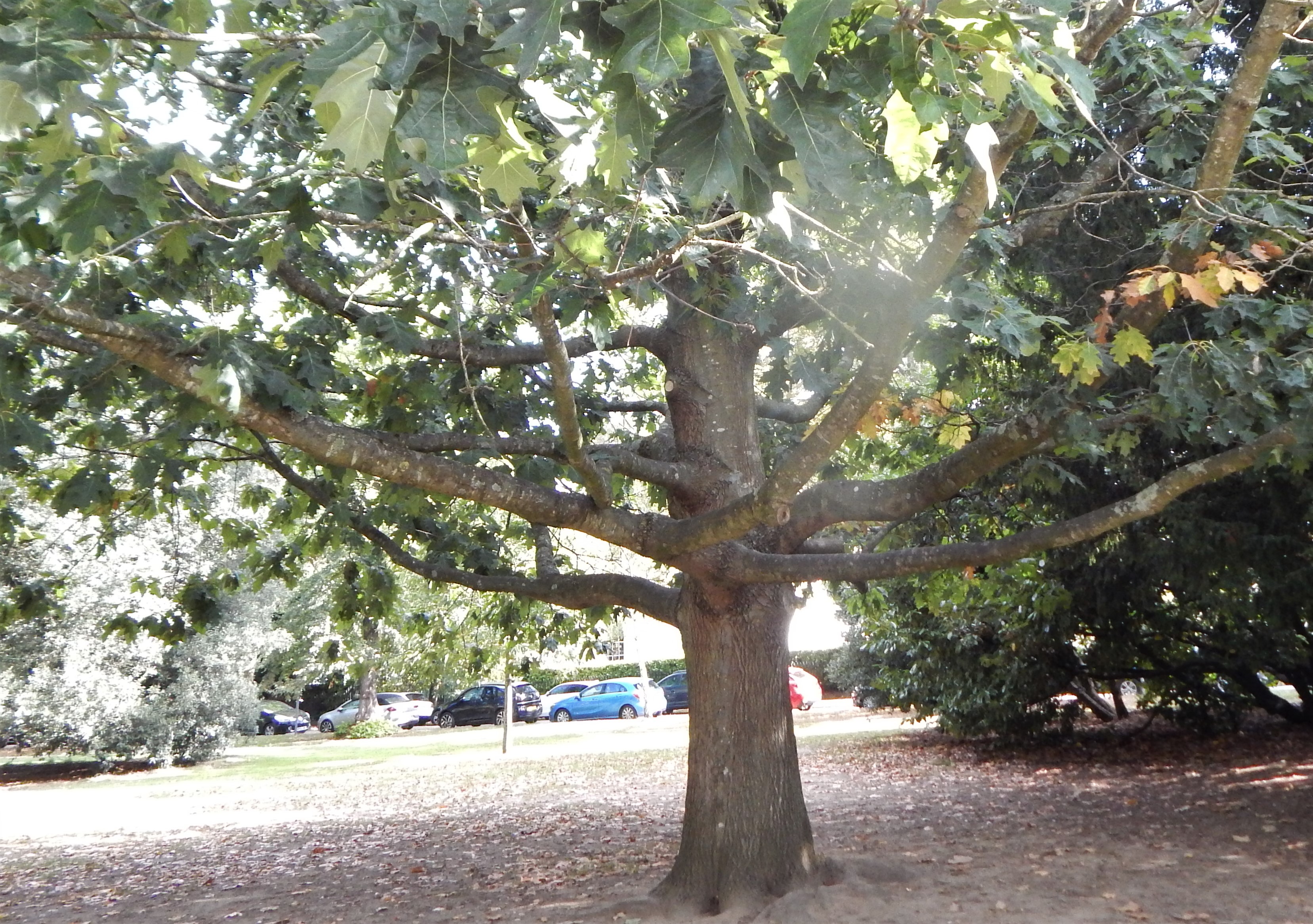
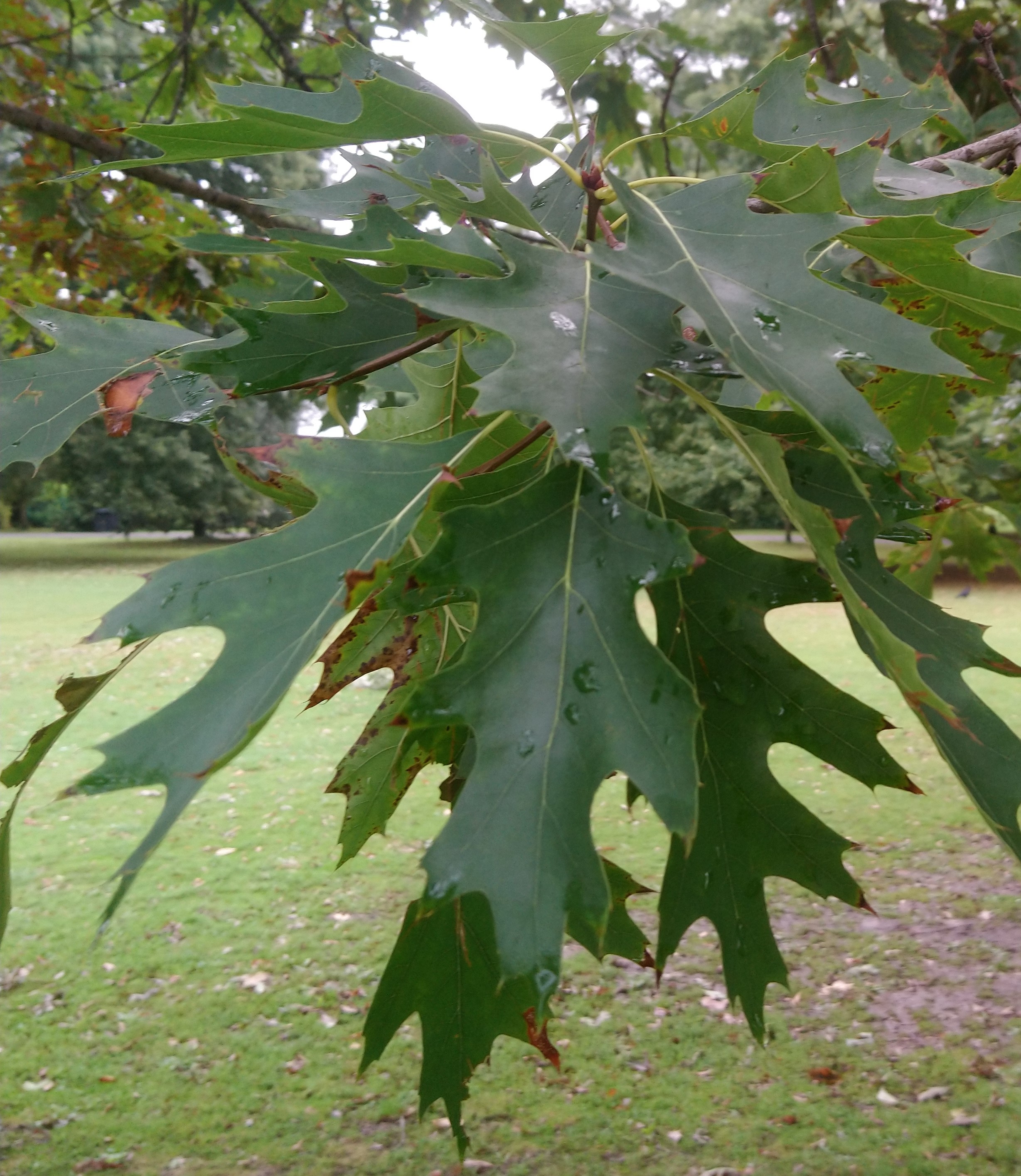

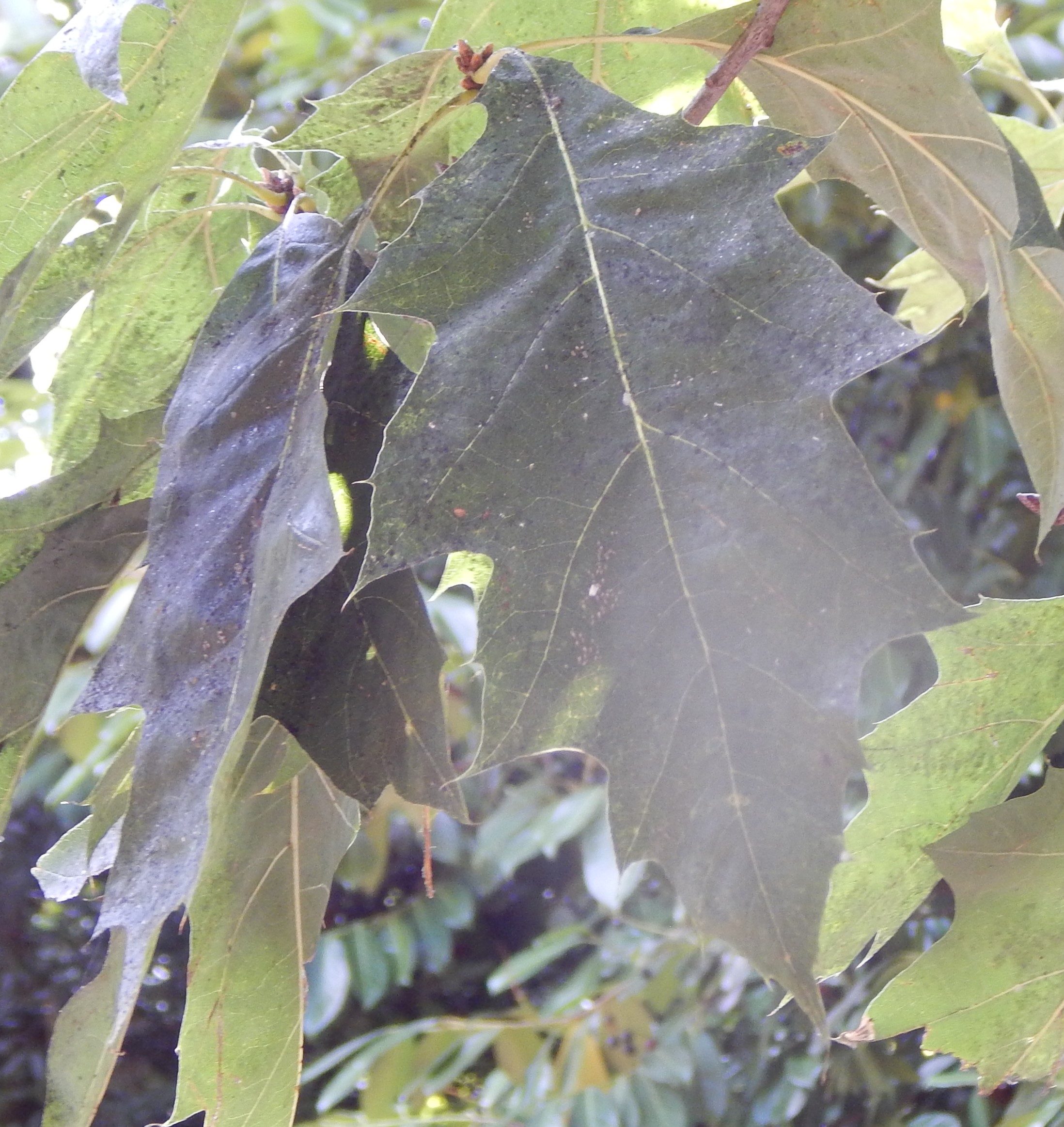
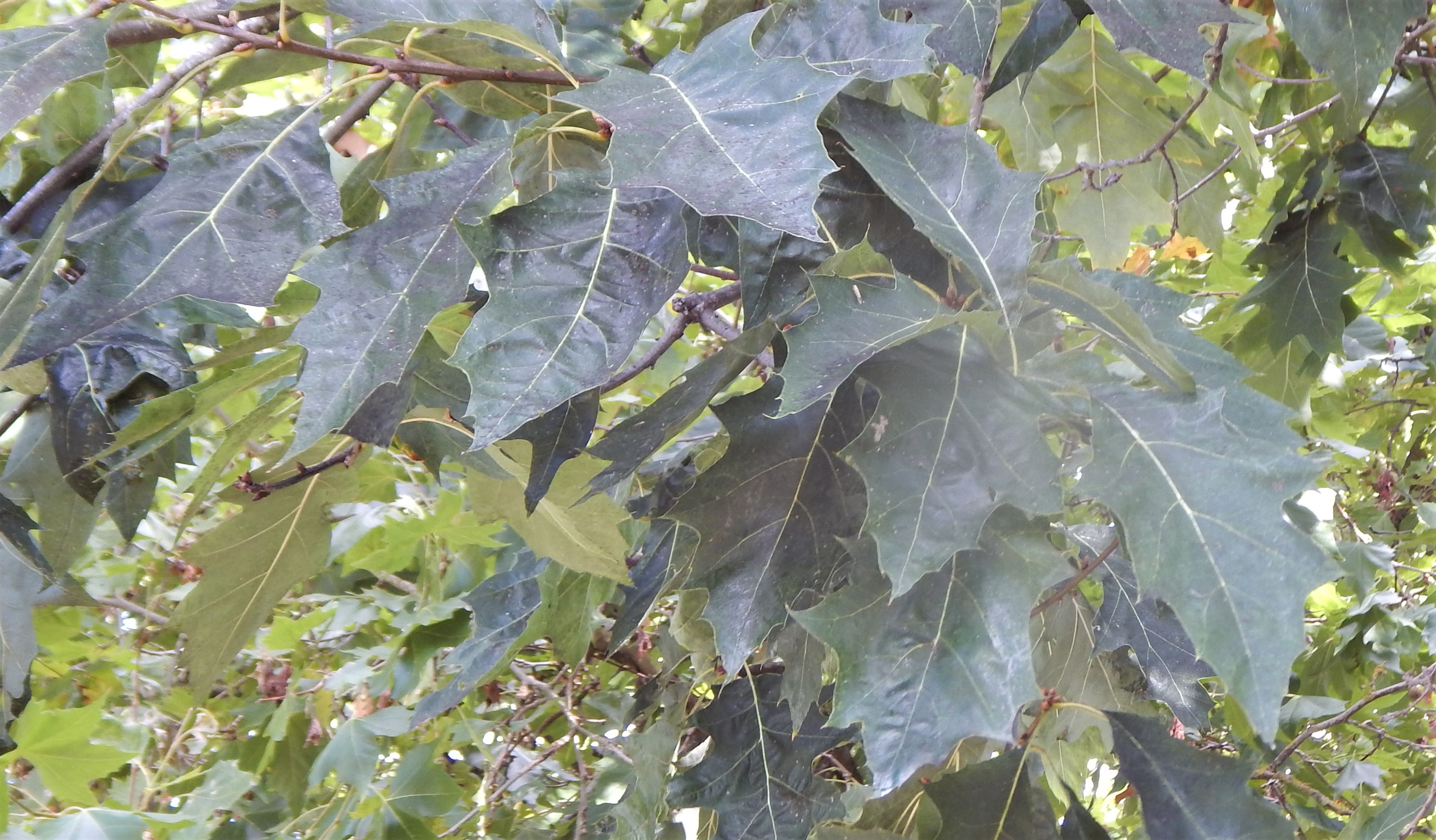

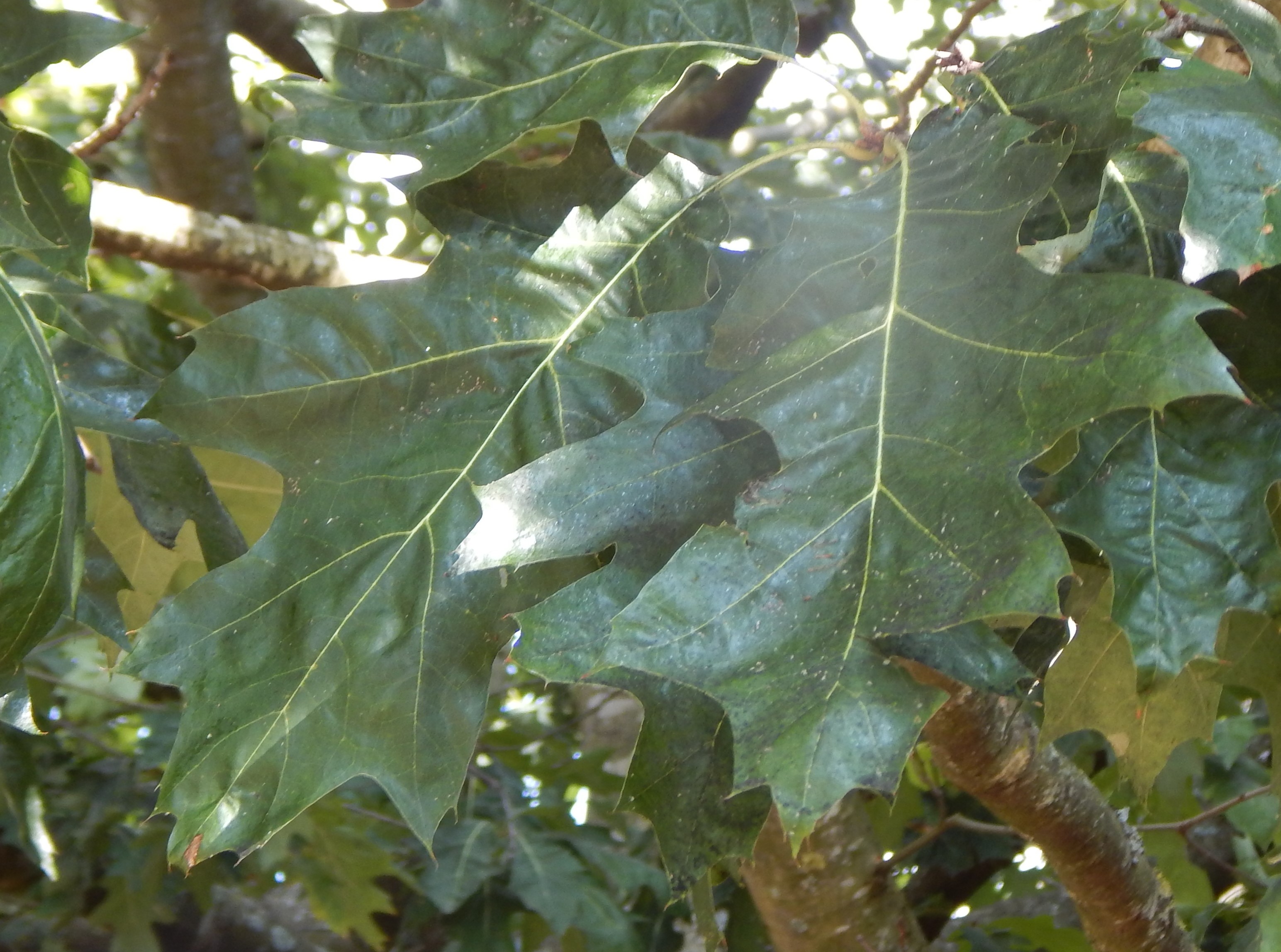
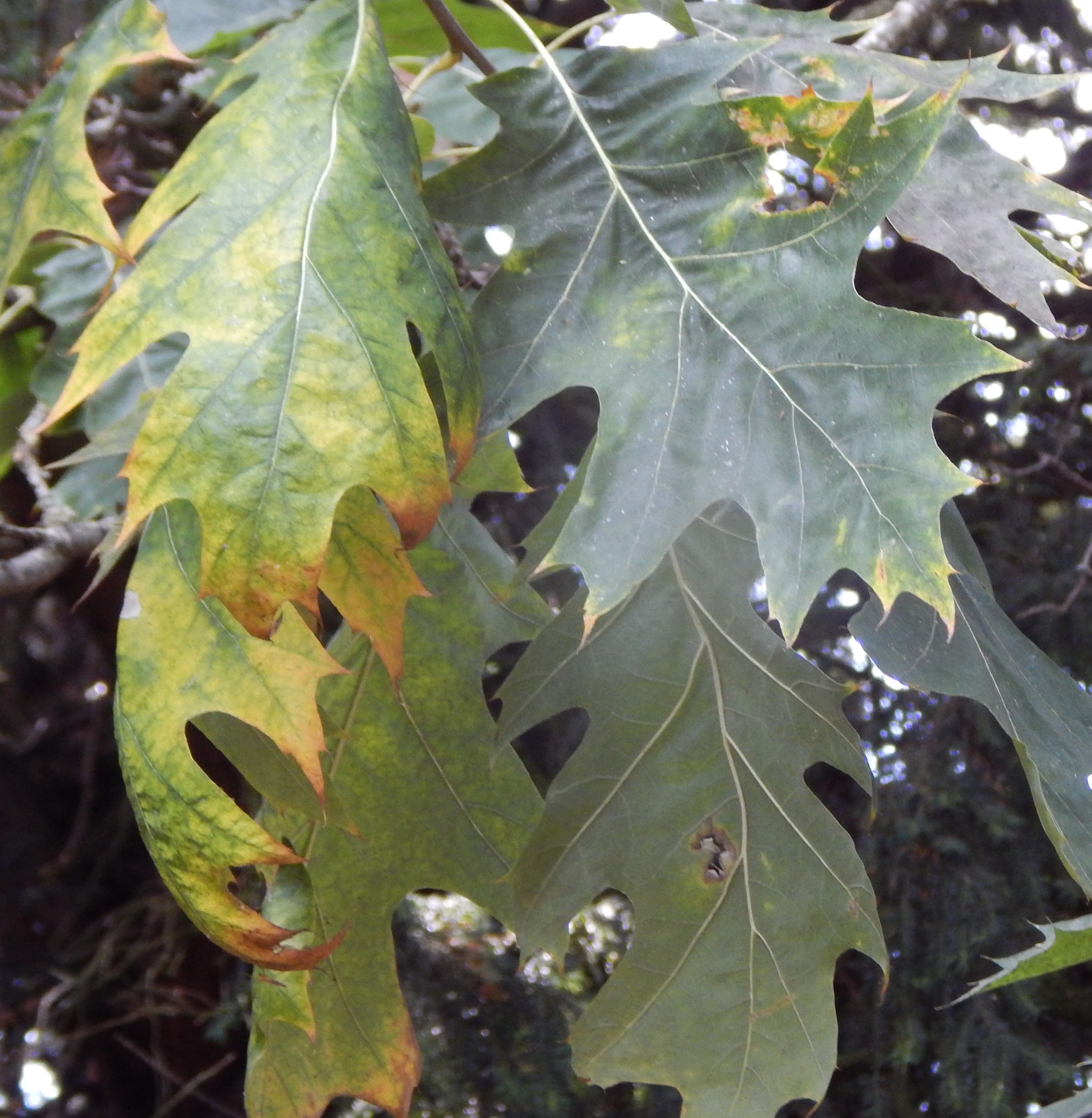

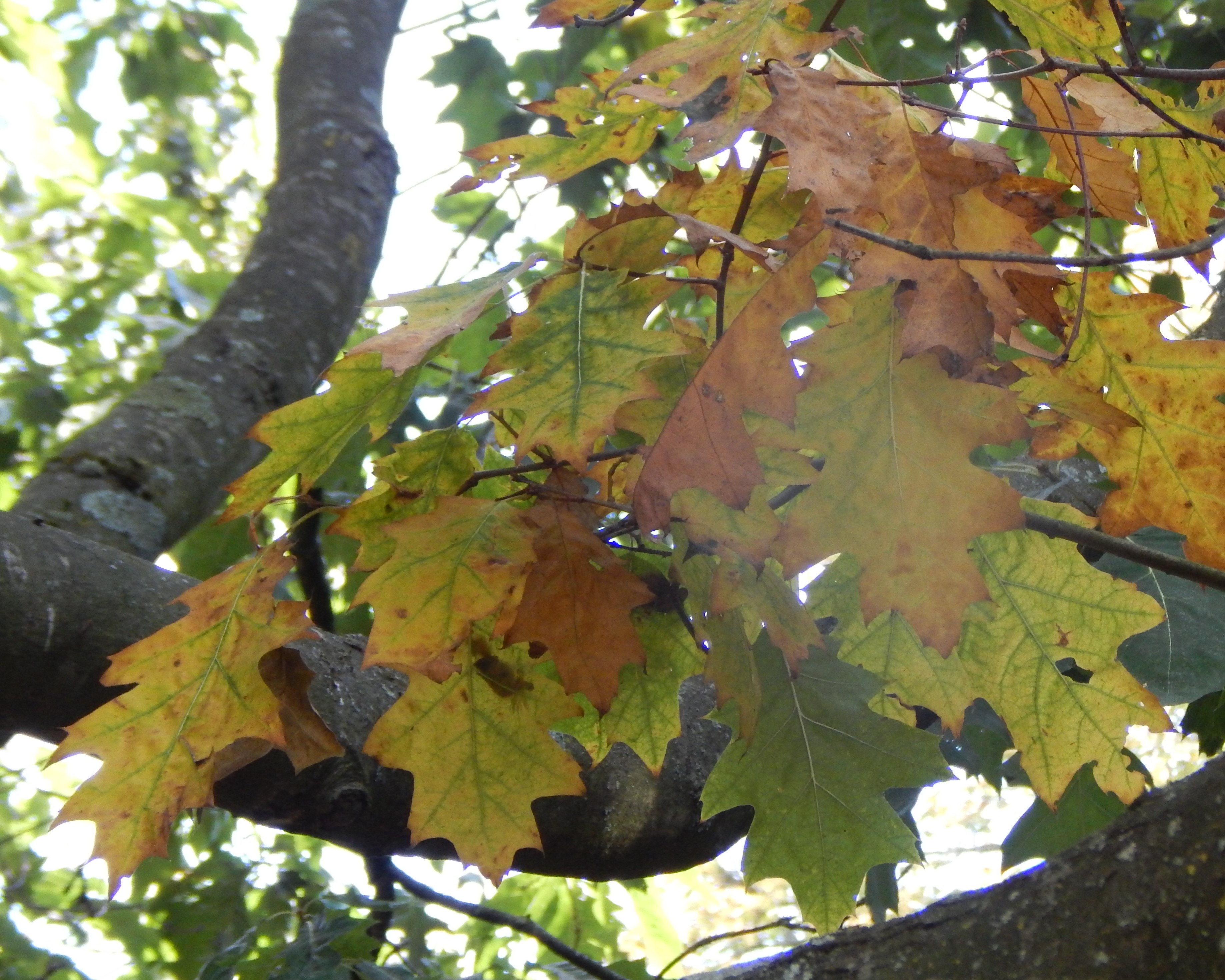
[E] Turkey Oak
Quercus cerris is also called the Austrian Oak. Its original distribution from Italy to Turkey does include parts of Austria. Its range included northern Europe and the UK until the last Ice Age, about 120 000 years ago.
It was introduced into England in the Eighteenth Century as an ornamental tree and is now widespread and naturalized. It’s fairly similar to our native oaks but its acorn cups are covered in soft, curly spikes.
Its timber is less useful than other oaks as it tends to crack and split, so it is used, for example, in fencing.
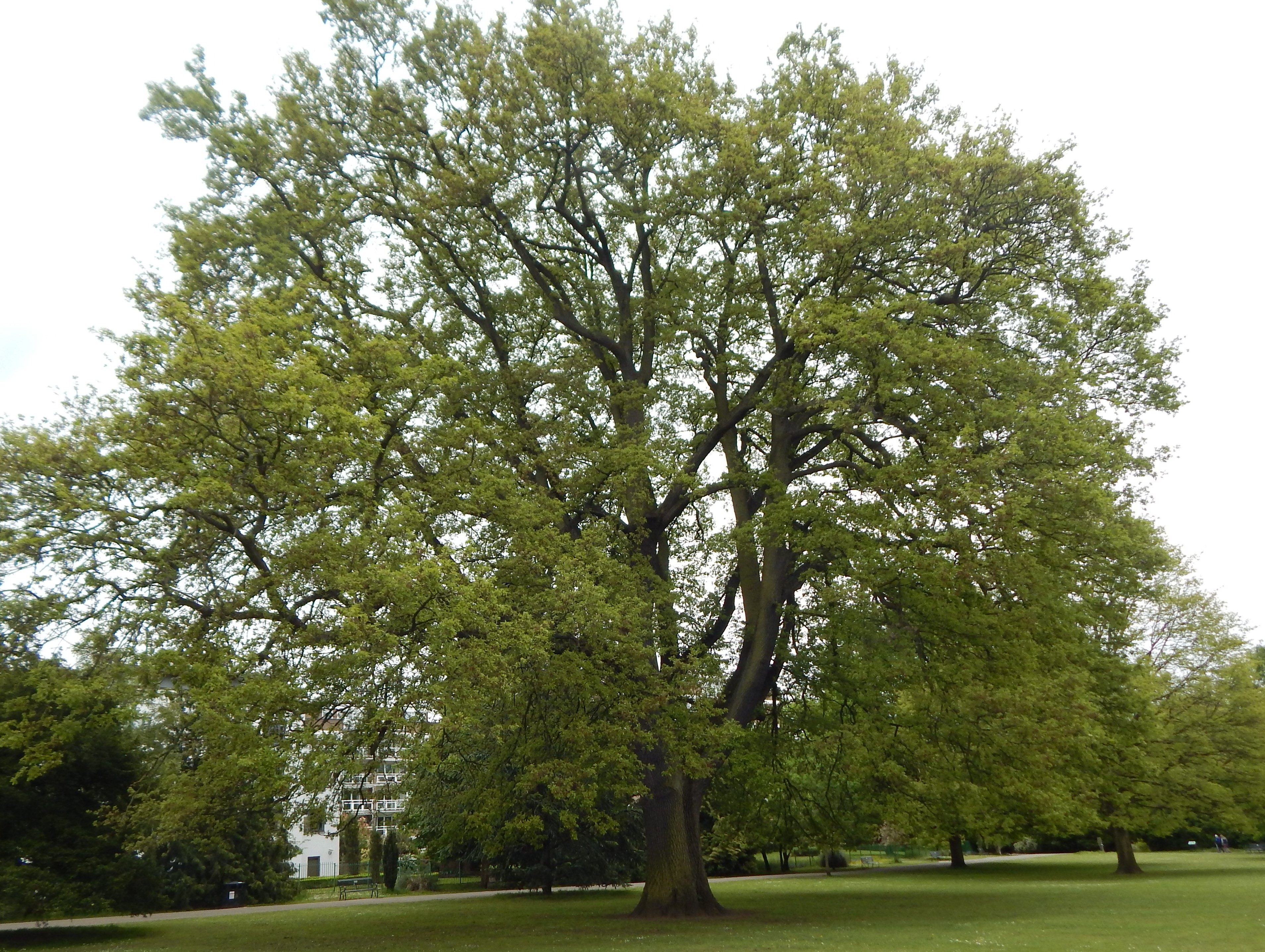
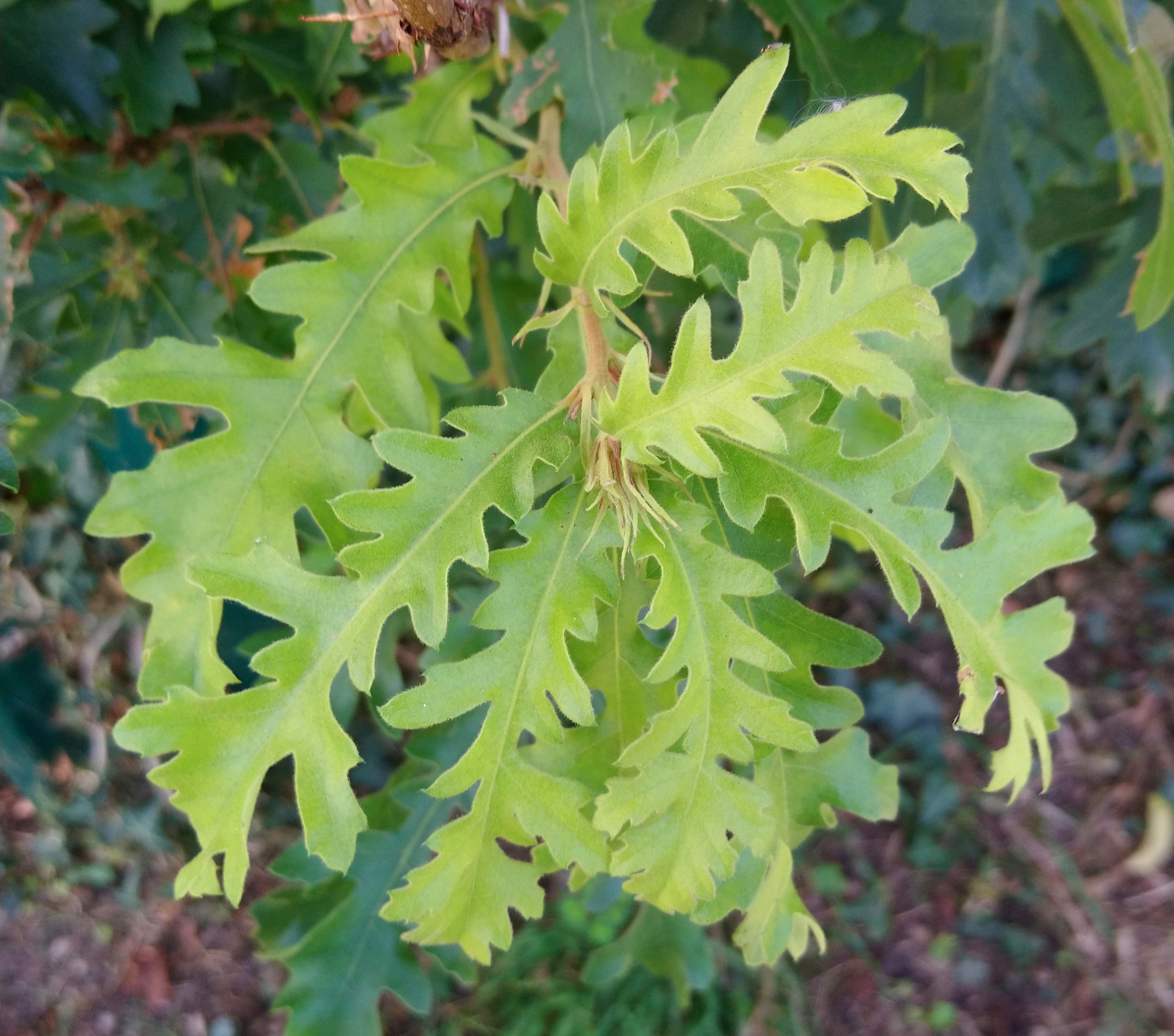
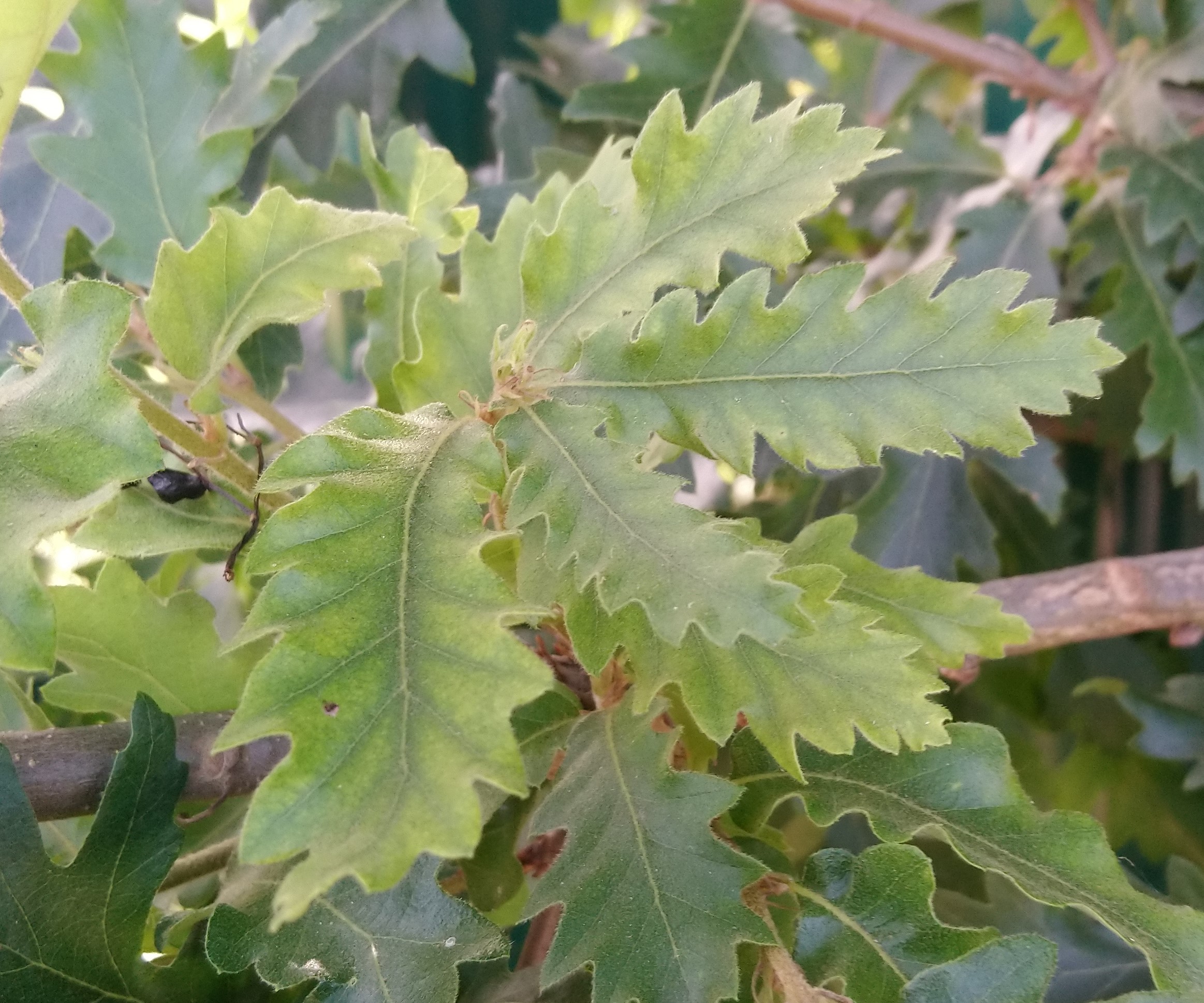
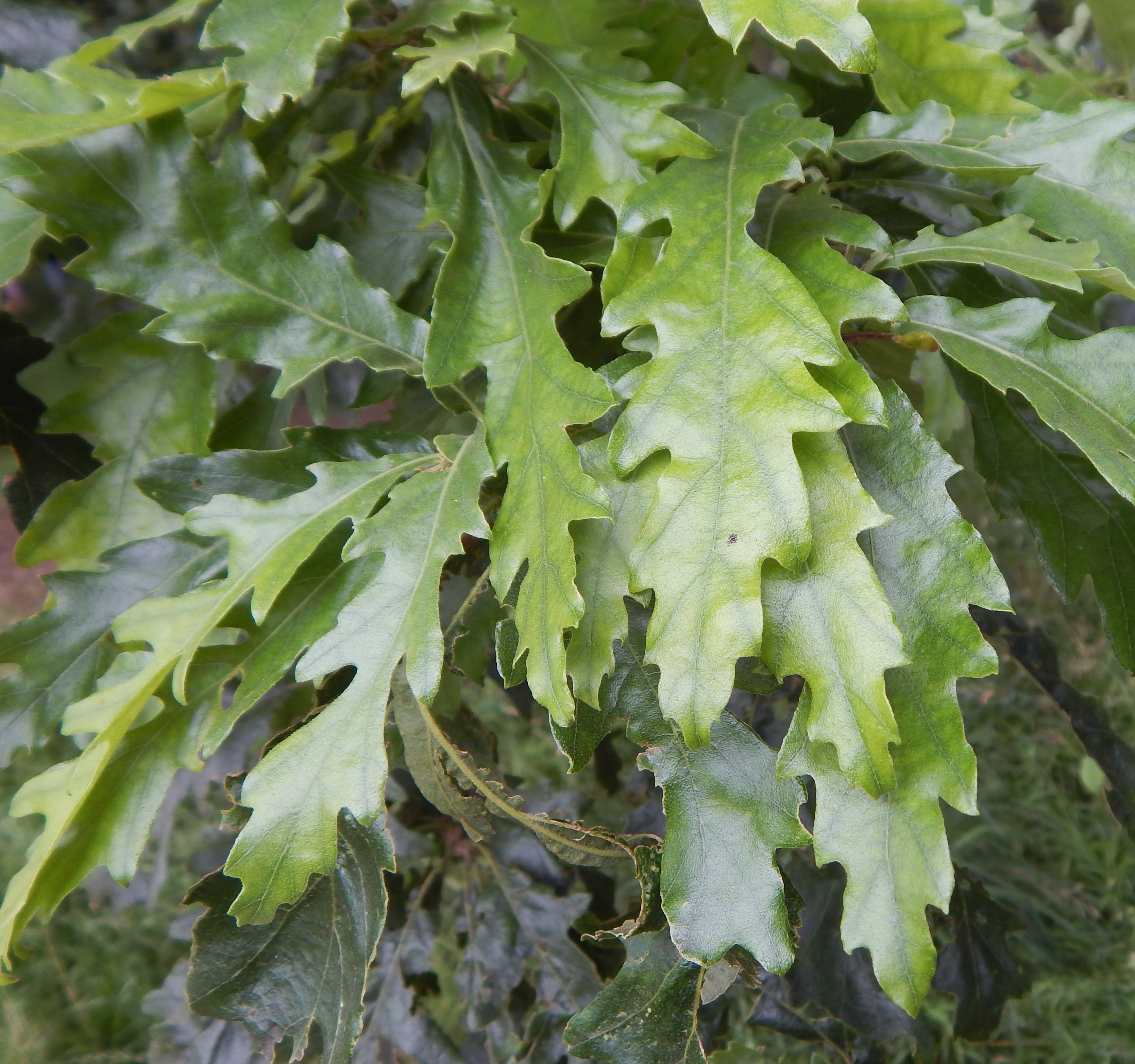



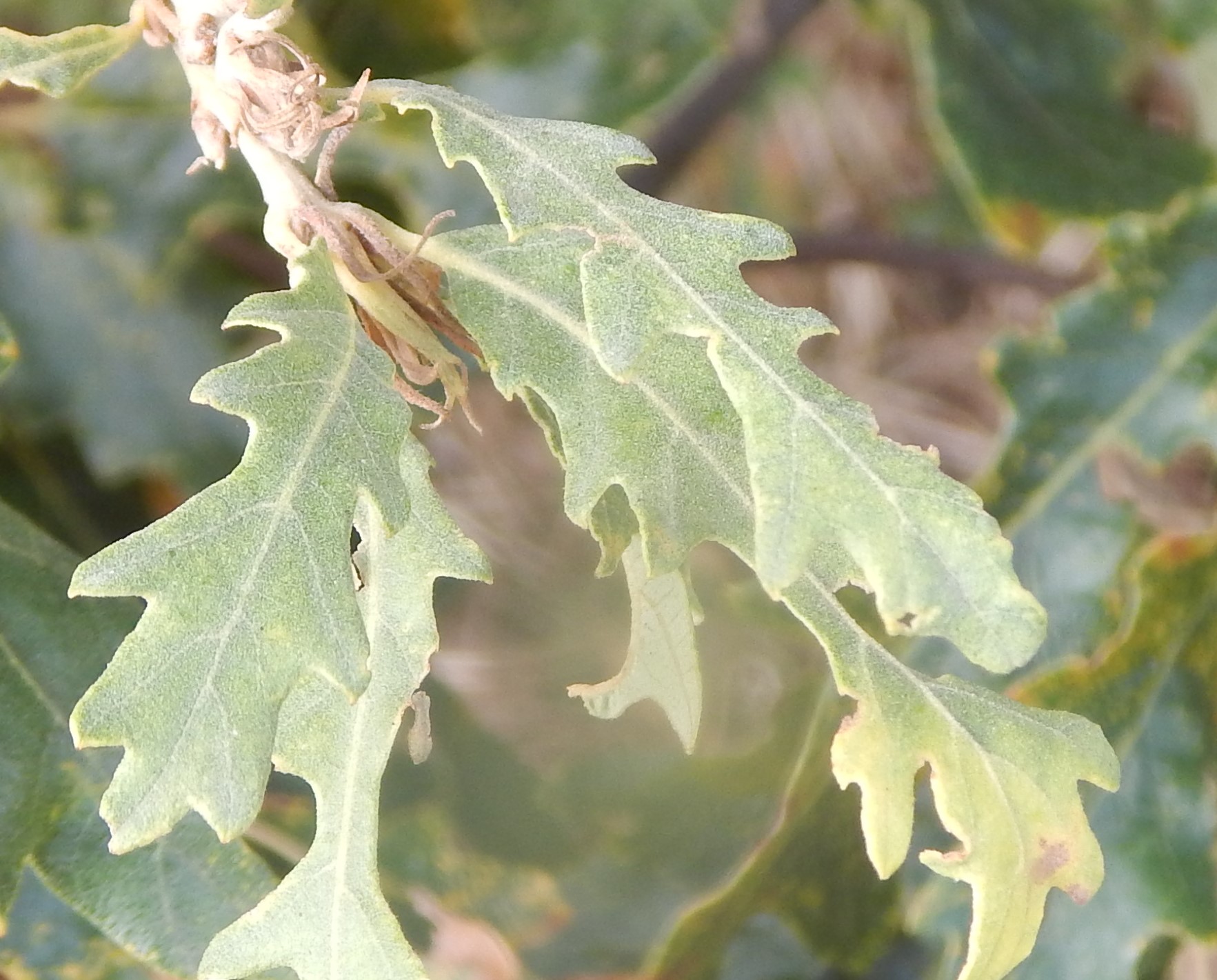
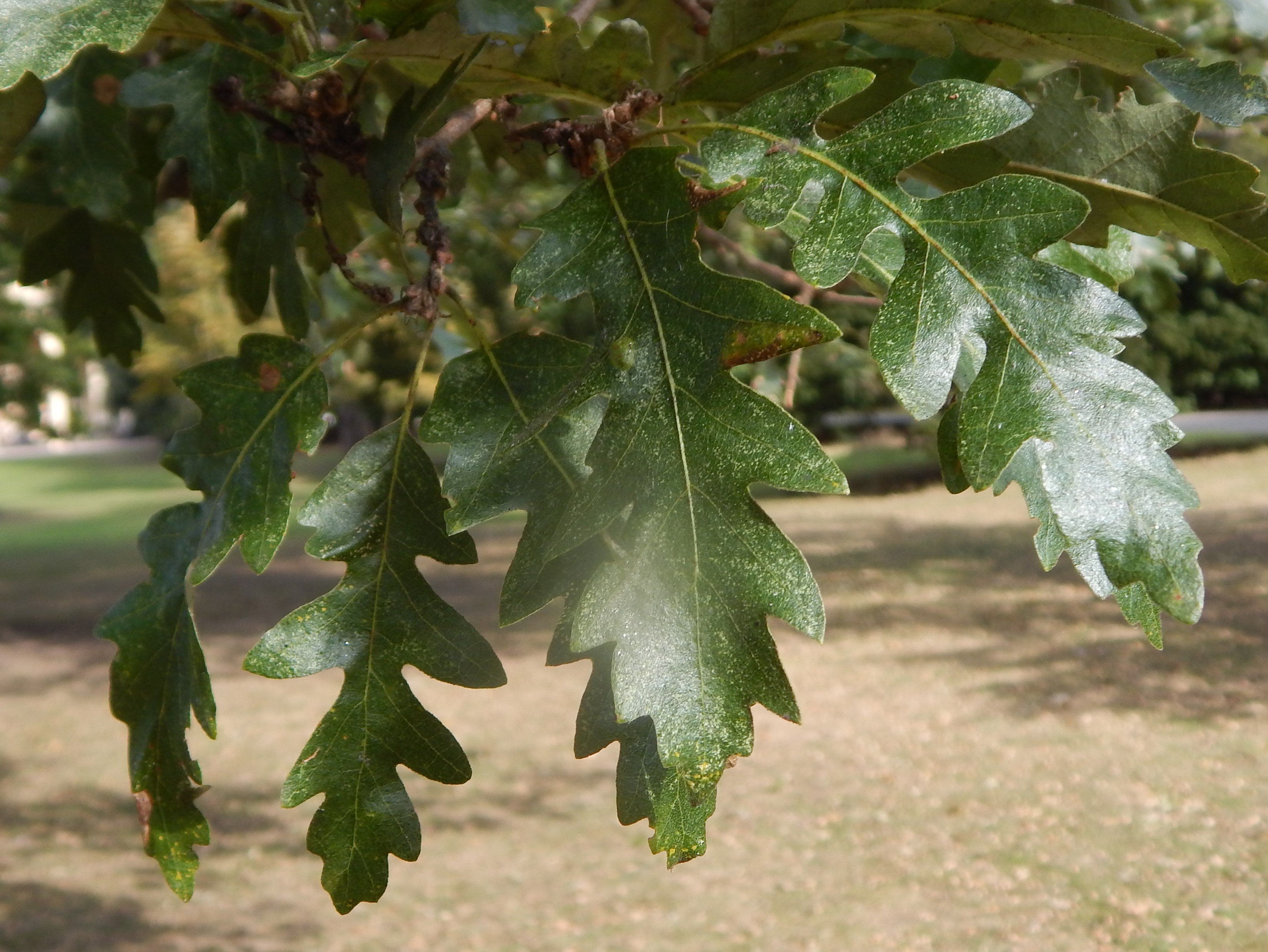
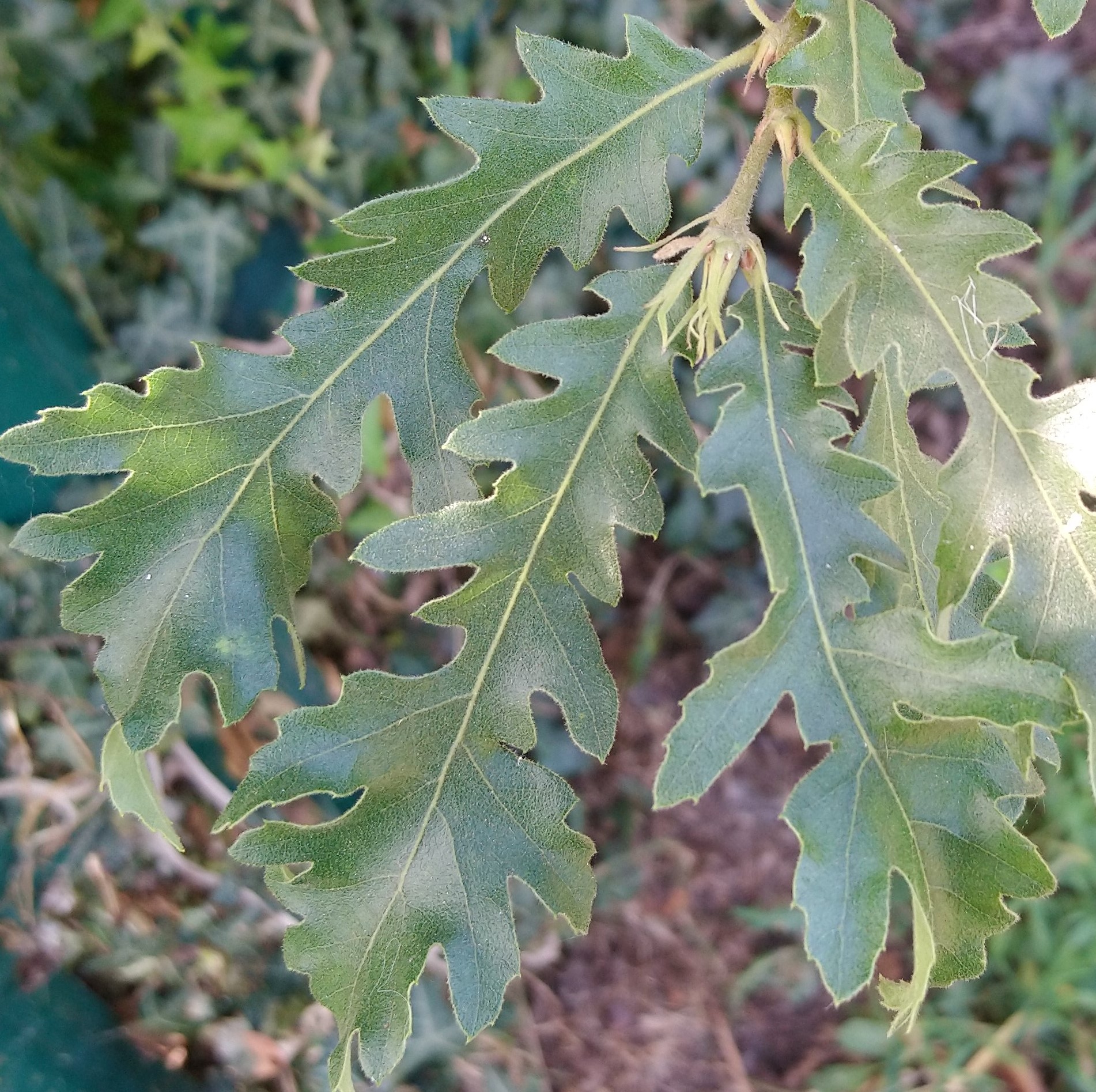
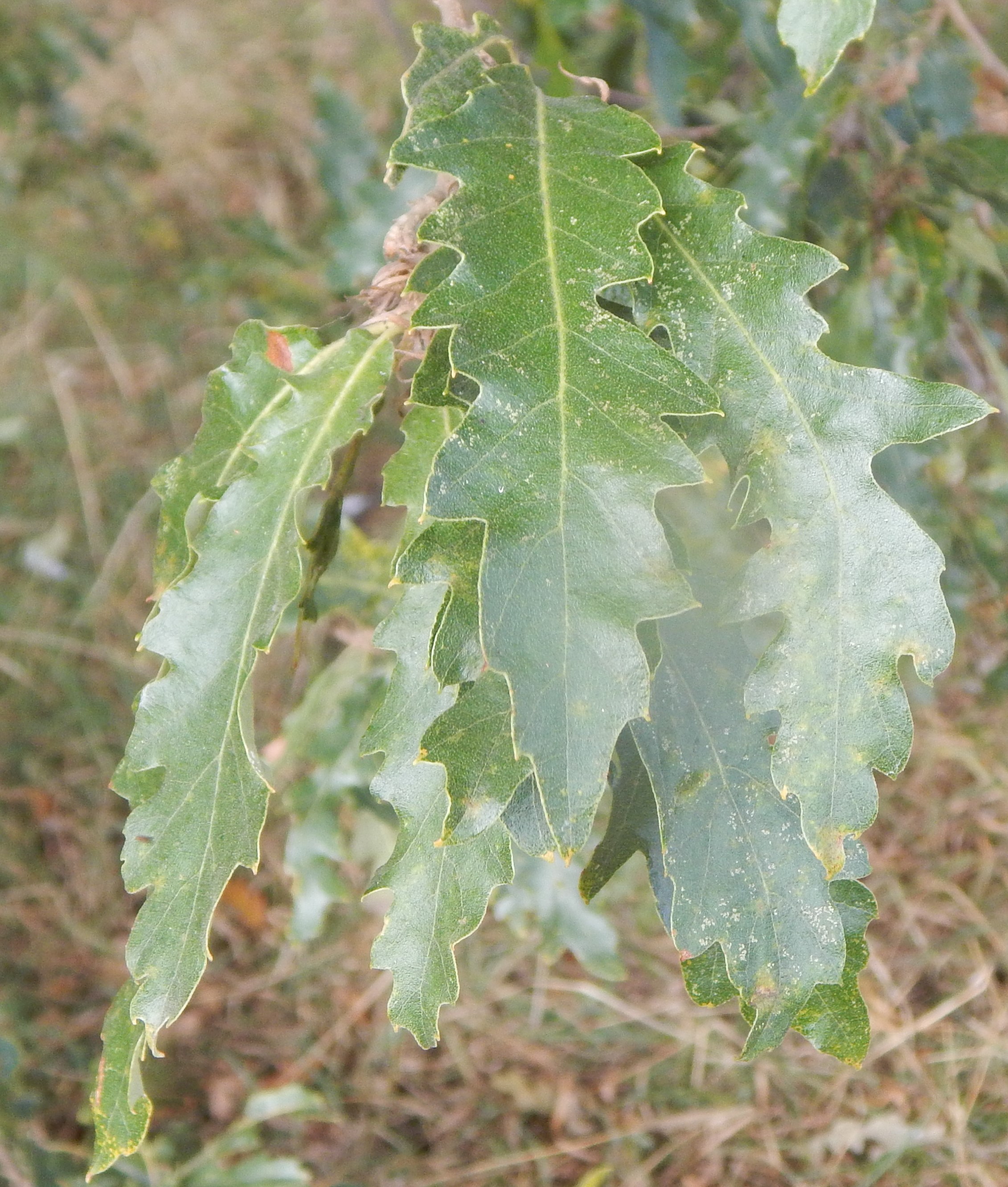
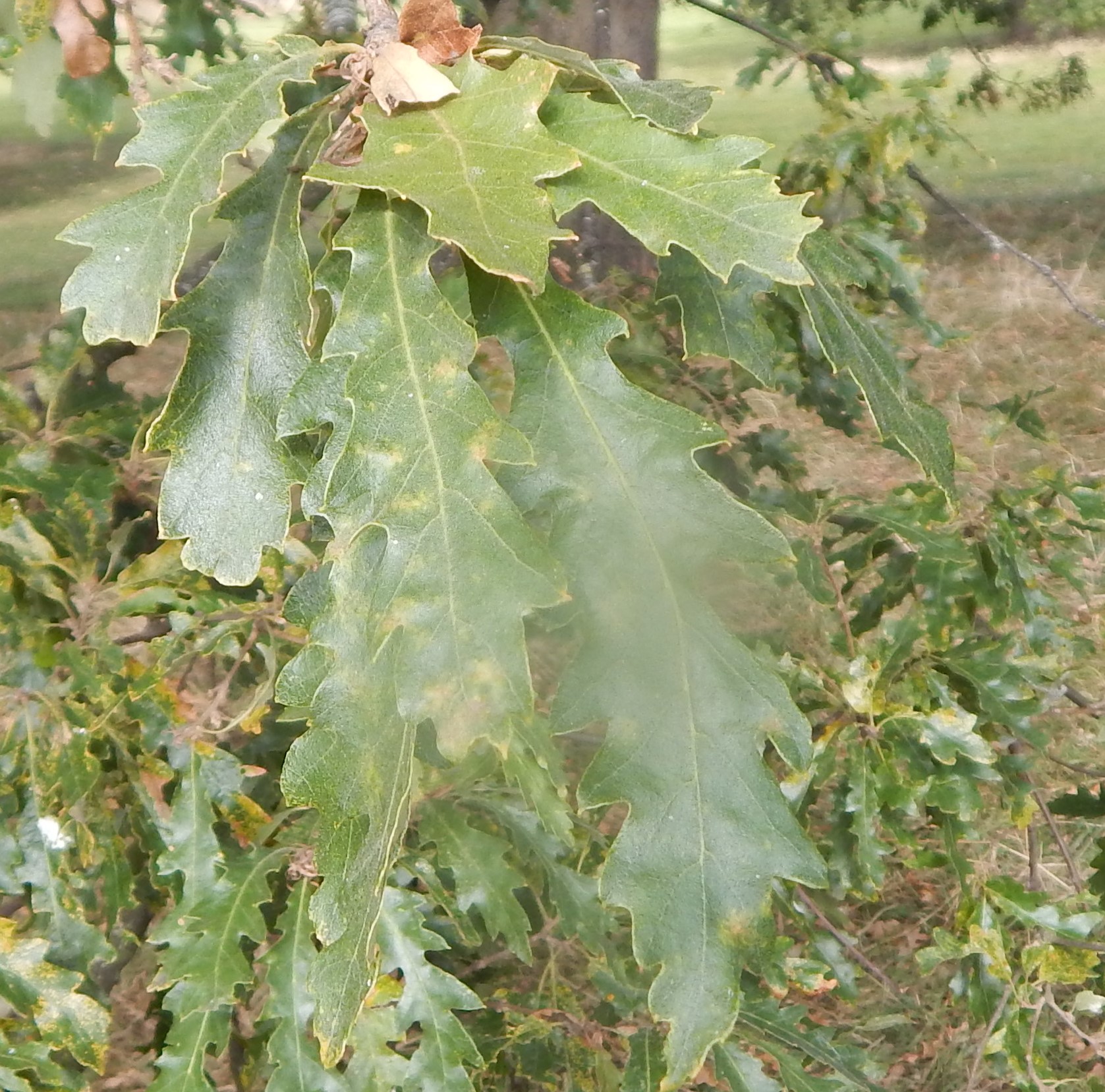
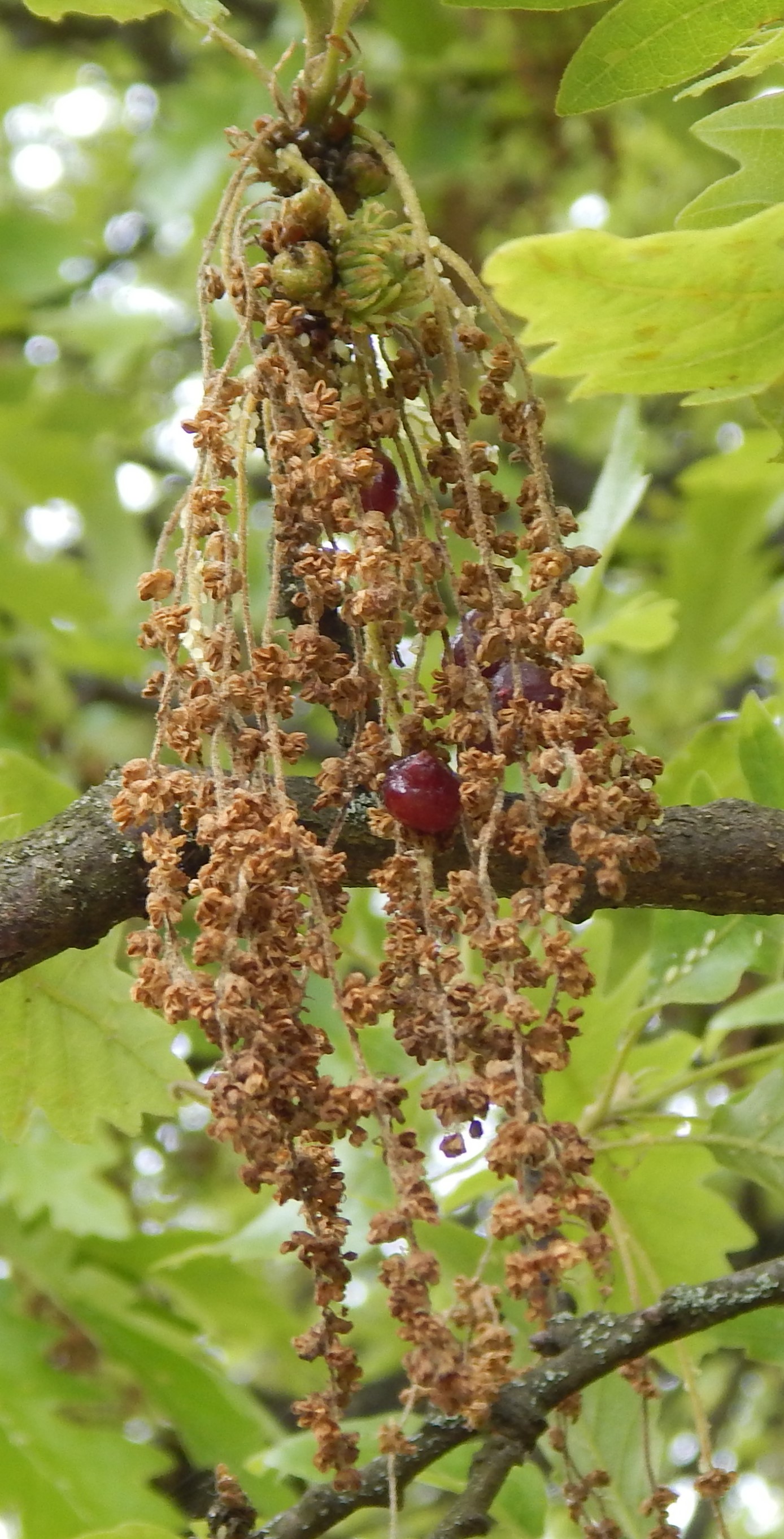


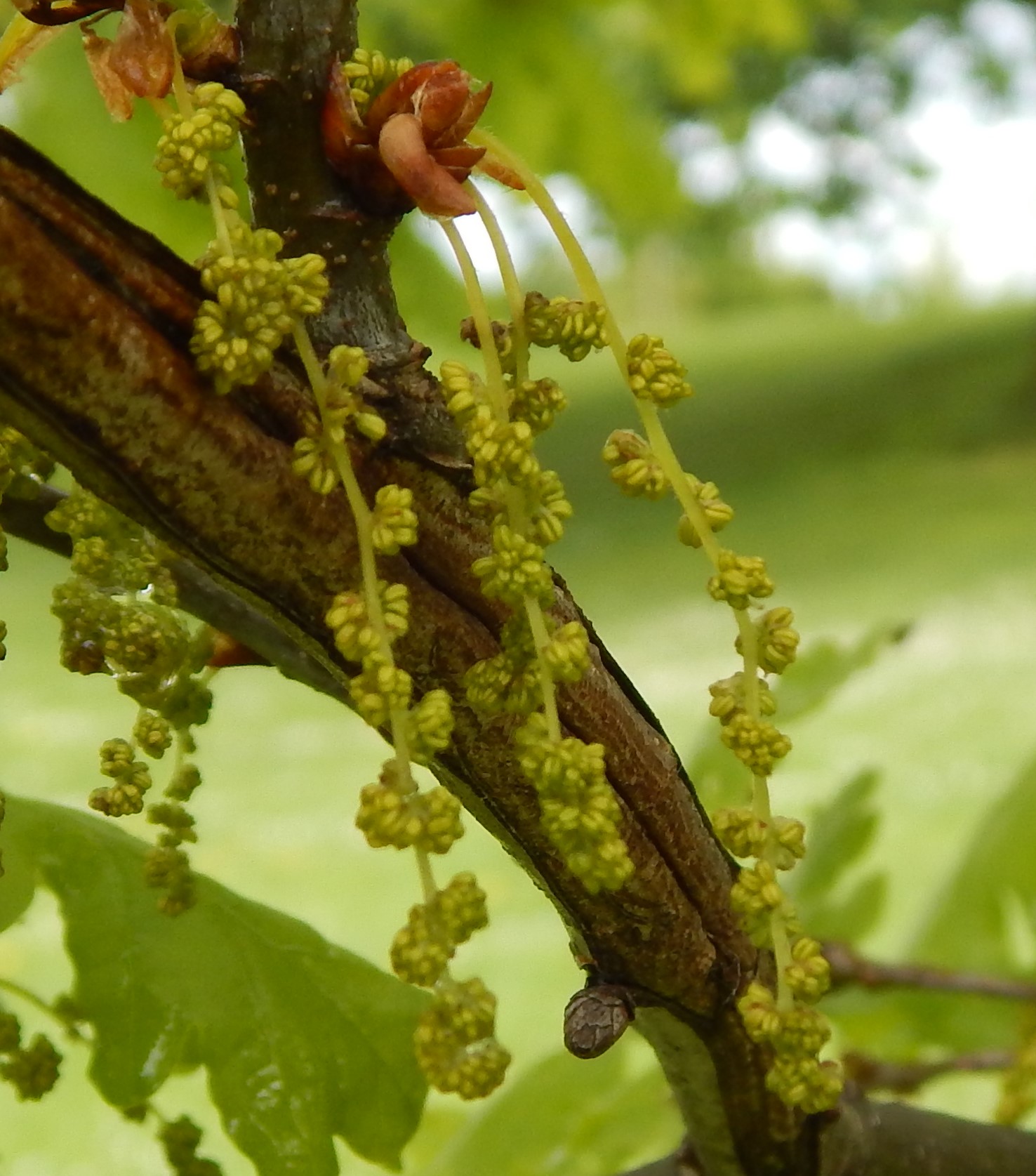
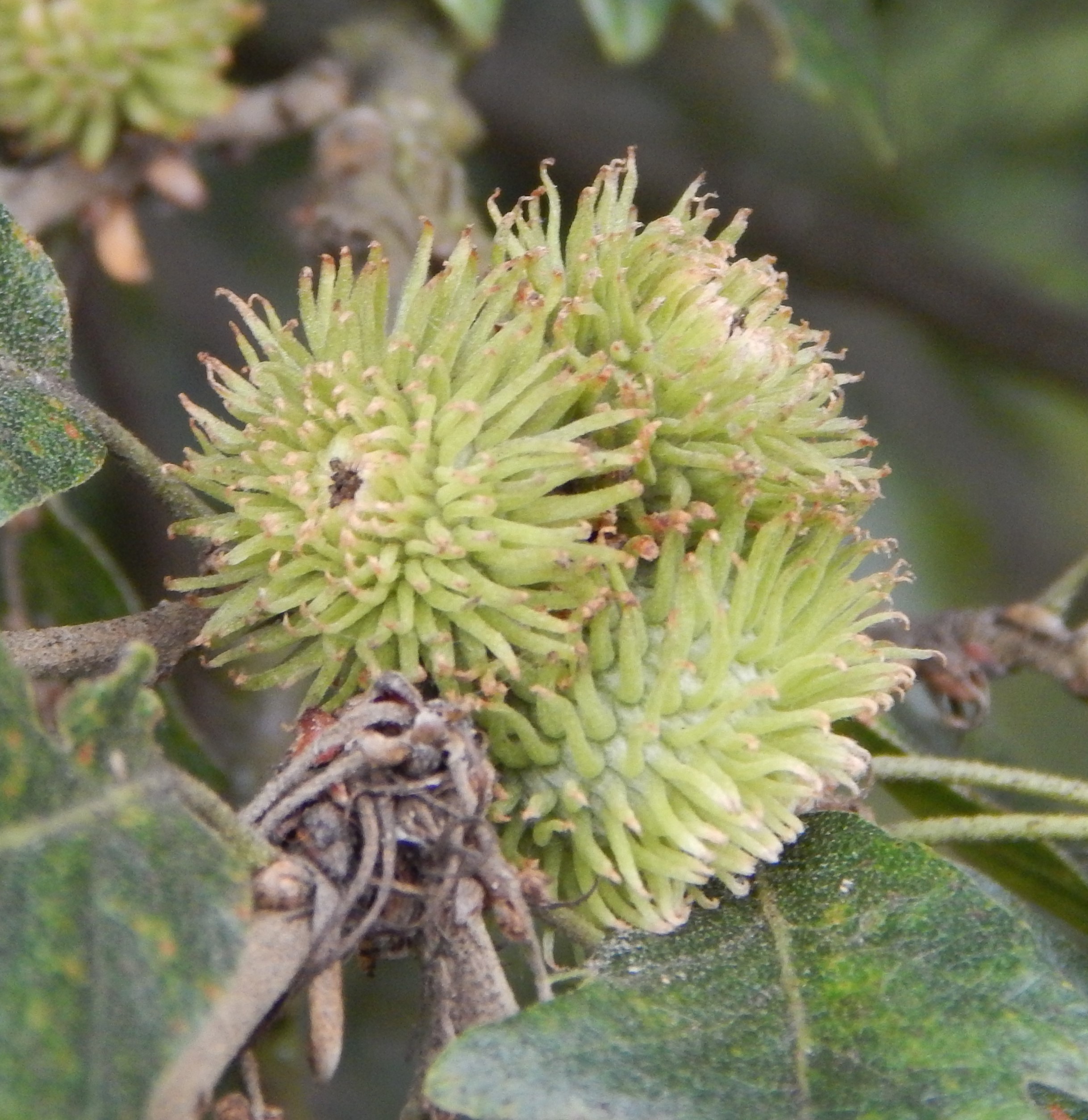




Other Oak Species
As well as the species considered in these two posts, several other Quercus species and several hybrids are cultivated in the UK as ornamental trees in parks and gardens. As for all cultivated plants, the varieties can have leaves of different shapes and colours including variegated leaves.
Other Notes
Andricus quercuscalicis is a species of gall wasp with a two generation life-cycle alternating between Quercus cerris and Quercus robur (or sometimes Quercus petraea.) The sexual generation develops on the male catkins of the Turkey oak. The parthenogenetic, all-female generation develops in large knobbly galls on the Pedunculate Oak where the acorn is developing.
This gall only appeared in Britain in 1950 but there have been concerns that it may seriously affect the fertility of the two native English oaks. In 1998, the Ministry of Defence ordered the felling of all Turkey Oaks on its UK bases

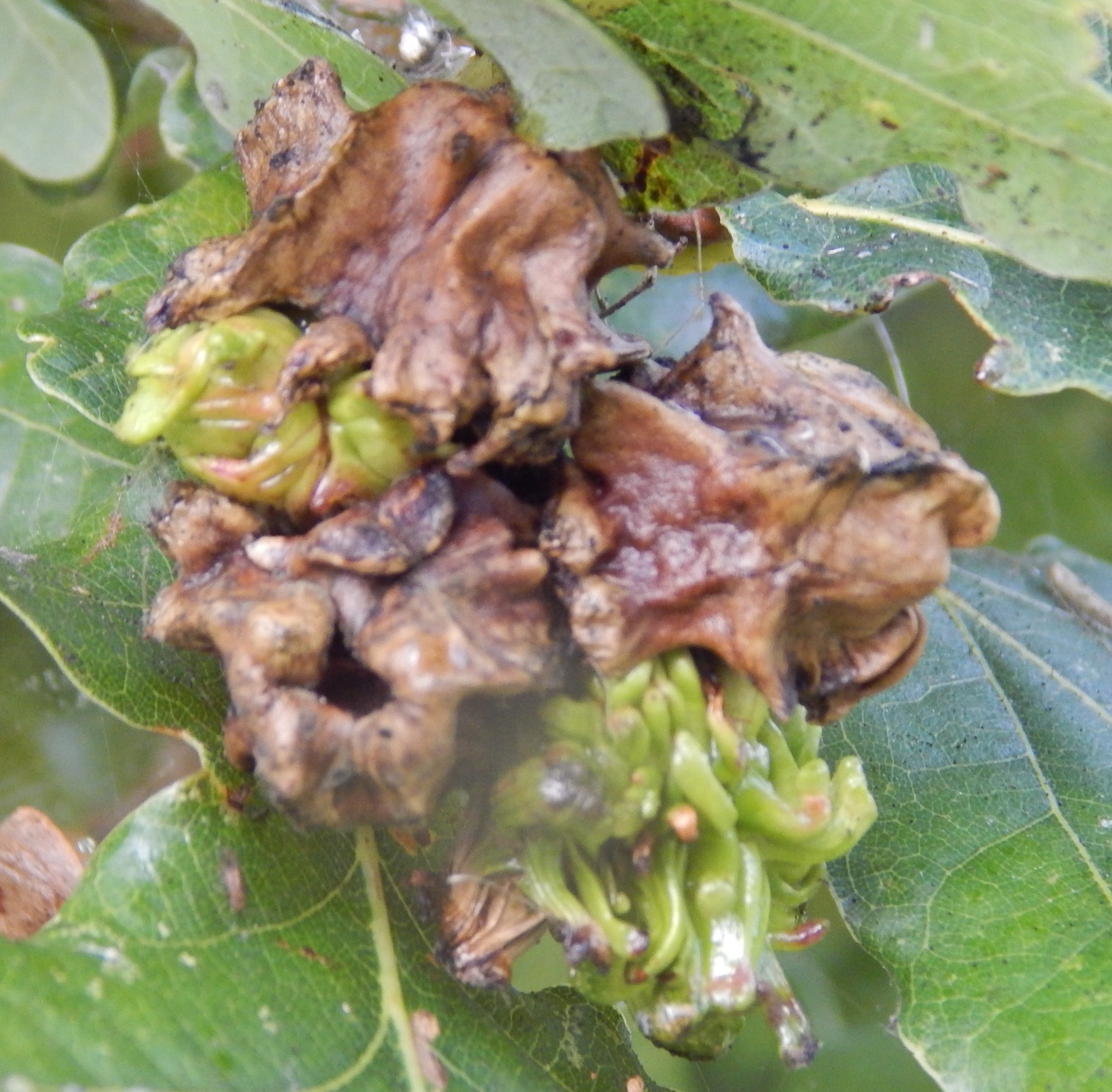
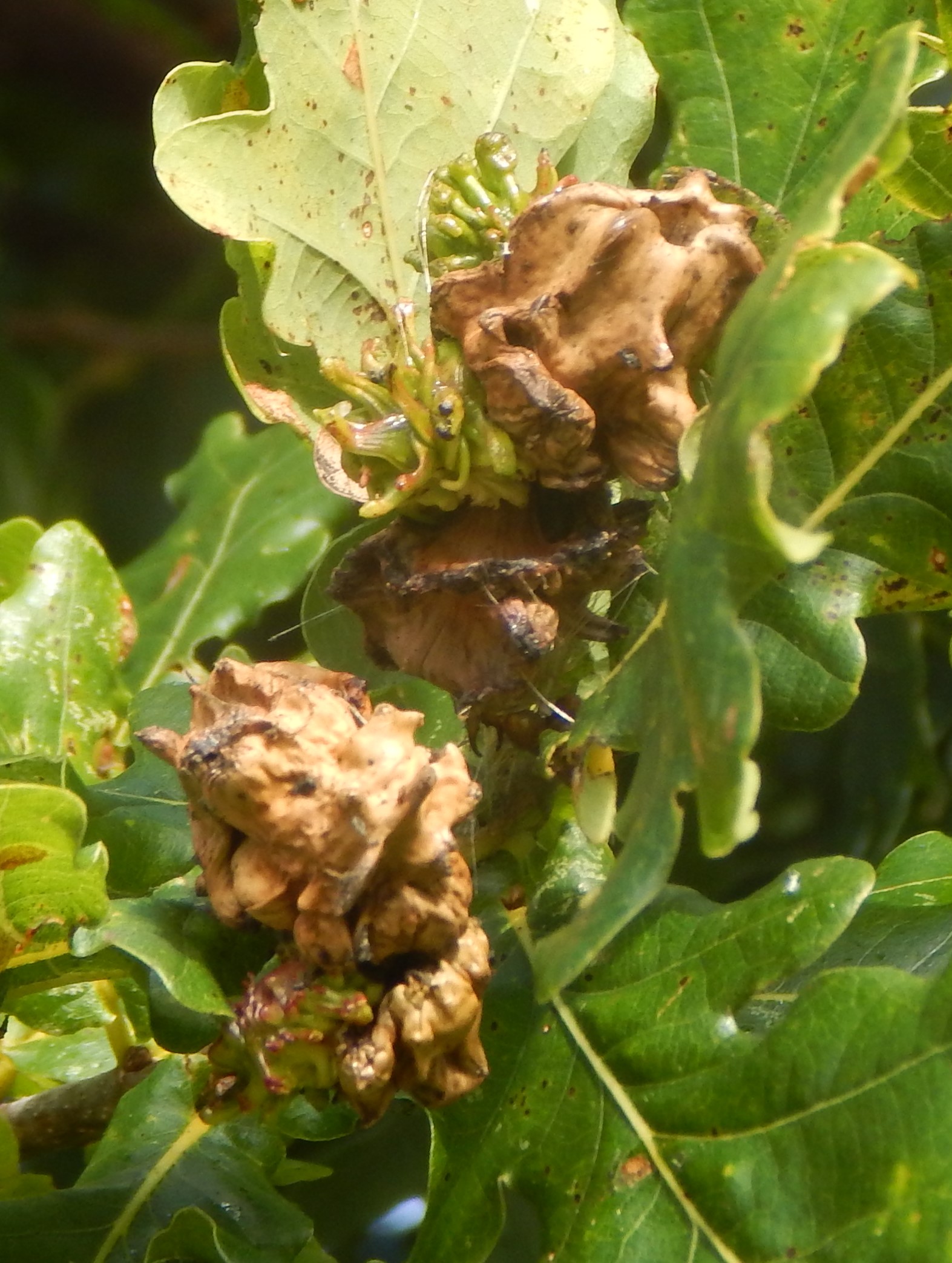
See also
Quercus suber, the Cork Oak, is an evergreen tree in the same section as the Turkey Oak. Found in western Iberia and Mediterranean coastal areas, it is the source of cork used for wine bottles and other uses. I have seen cork trees on the island of Corsica where it is one of their main products.
